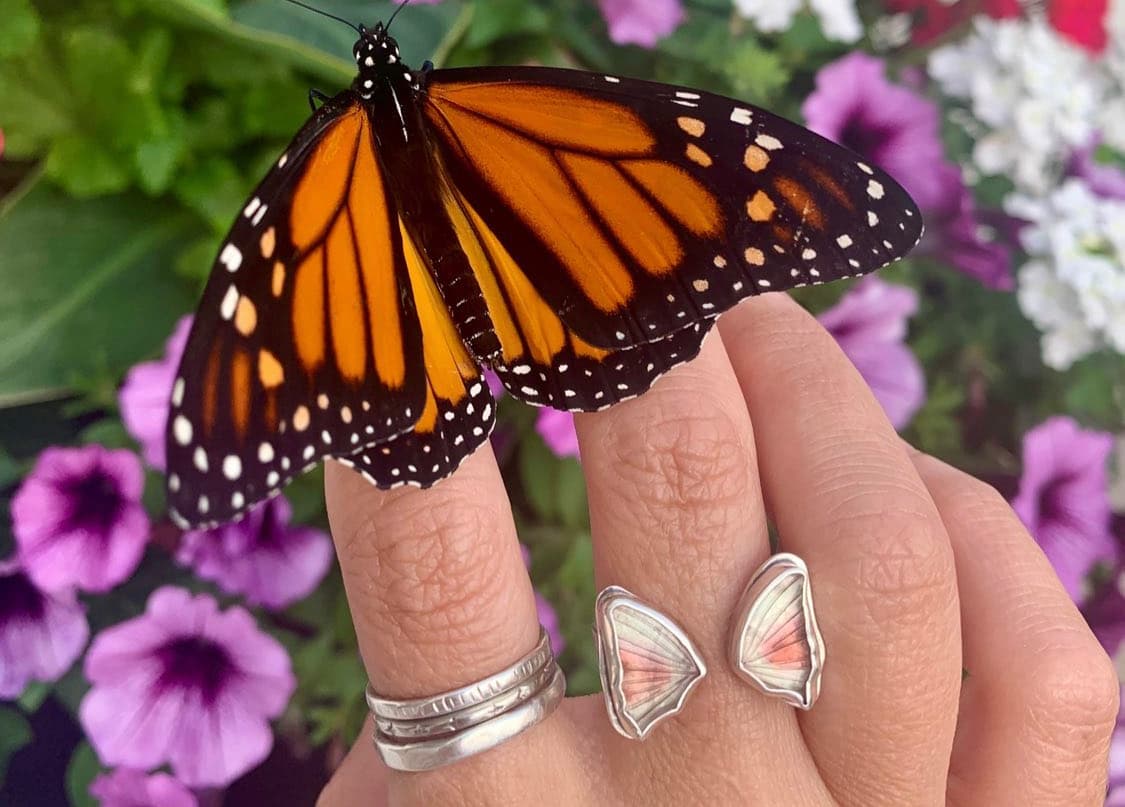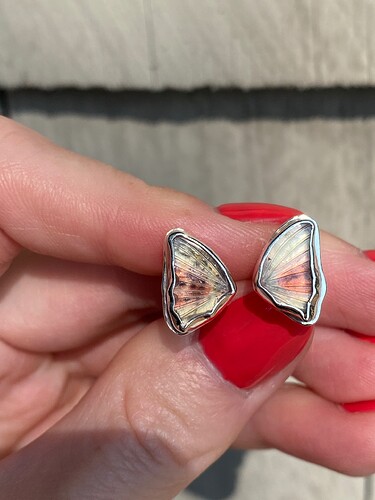hi there!
I just cleaned up a pretty tarnished sterling ring by putting it in my ultrasonic for an hour and then putting it in my steel shot rotary tumbler with dawn soap for 3 hours. the silver behind the Tourmaline butterfly stone (specifically the one of the left side) is still very dirty. It almost appears as though there is debris under there. I was wondering if there was any type of solution to put the ring in that may be able to clean the silver underneath. or moving forward what would be the best thing to preserve the high polish for longer. The first photo is a before shot from when the ring was first finished (that was about 2 1/2 years ago) you can see the black spots in the second photo, that was taken today after I took it out of the tumbler. any information would be greatly appreciated! thank you!
I’ve been putting very thin fine silver backings behind transparent stones lately for this reason. I am curious what the wiser ones will say. Good luck!
I’ll be curious if anyone in the forum has a solution, beside pulling the stone and cleaning. Tarnish in sterling silver over time (especially over a period of years) is a hard issue to outwit.
In the future, you could try to setting your transparent stones with the same approach that a watch maker uses to seal a watch crystal on a watch. (In this case your transparent stone is like a watch crystal. You’ll need to carefully seal the edge in between the stone and the bezel, taking extra care to not get any sealant on the visible bottom surface.)
You can use watch crystal cement. You could also use clear, silicone sealant.
Once you have tarnish though, in a situation like this, I don’t see anyway to remove it without pulling the stones. But maybe someone else will have a better solution.
Beautiful rings and beautiful stones!!
Jeff
Fine silver backing is a good idea!
I have used fine silver before and even some sort of foil…Rob
I wish I knew. I usually use fine silver. I’ve only had this happen twice, with a quite thin rosecut Swiss blue topaz - the first one I re-set, being super careful, and it came back to me with the same problem. Given that it was the same person I did wonder, since I’ve sold quite a few of the same sort of thing with no issues. Perhaps she works with something that makes this happen, or perhaps there was some minute imperfection in the stone which affected the metal? I don’t know but we just exchanged it for something else.
Sadly even fine silver eventually tarnishes. We use a very thin layer of platinum as a reflector plate. But only on prong set stones in rings. Stones that are bezel set in rings eventually get some kind of gunk underneath them that can be nearly impossible to remove.
If platinum is out of your budget rhodium plating would work. It needs to be a two step process. Silver must first be plated with either nickel or palladium before rhodium plating.
Jo
That’s interesting - I was thinking about getting some rhodium-plated chains instead of sterling, but I know a lot of people react to nickel. Hmmm.
if you are worried about the nickel under plating use palladium for an undercoat.
Many silver chains are rhodium plated as are inexpensive mass market jewelry. Sadly the rhodium plated on silver jewelry does wear off and is most every repair jeweler’s worst nightmare. When soldered on for repairs or sizing the plating blisters up and leaves a horrible blistered mess. It’s a real bitch to remove. Usually a ring has to have all of the rhodium removed with abrasives and refinished.
However if using rhodium plating on a reflector plate under a transparent stone it shouldn’t be an issue as most stones are protected from heat while soldering.
Jo
I’ll just keep getting sterling then. For my better items I use chains I make myself. I don’t have the capability to do plating. Thanks.
thank you so much for all of the feedback! very helpful!

